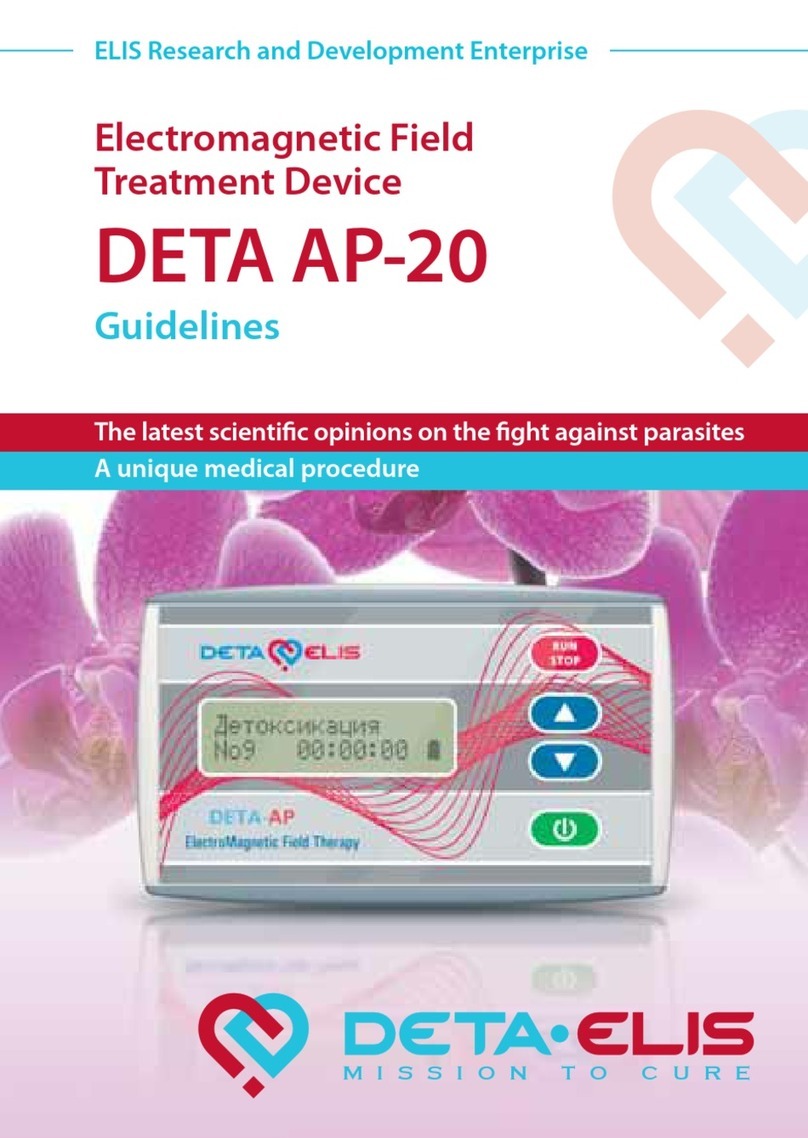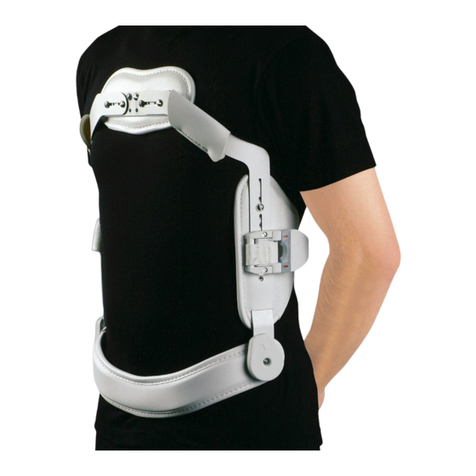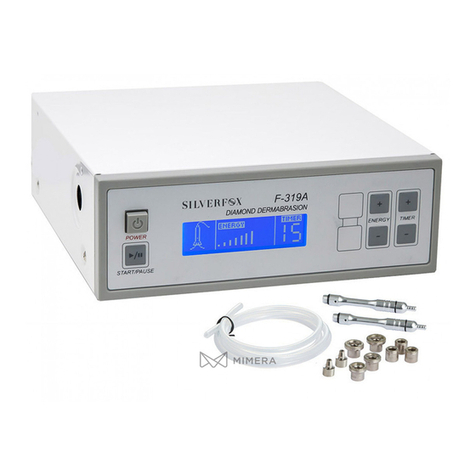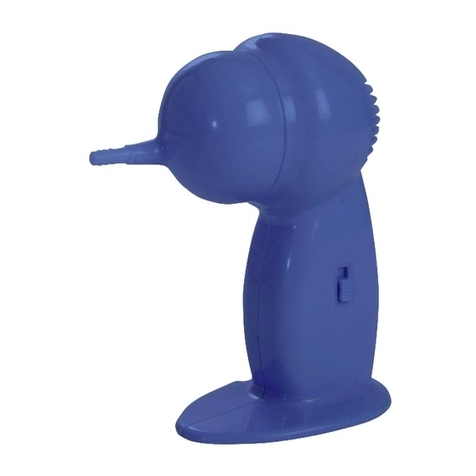Deta-Elis DETA Ritm-13 Instruction Manual

1
ELIS Research and Development Enterprise
A unique medical procedure
The latest scientic opinions on the ght against disease
Electromagnetic Field
Treatment Device
DETA Ritm-13
Guidelines
MISSION TO CURE

2
© ELIS Research & Development Enterprise, 2010
All rights reserved. Partial or complete photomechanical reproduc-
tion and recording onto electronic media is prohibited.
Guidelines developed by:
S.P. Konoplev,
T.N. Ghannam

1
Guidelines
Introduction 2
Historical background 3
External electromagnetic radiation 4
Impact on the pathological factor on the human body 6
List of treatment programs
1. "Active protection" 10
2. "Regulation of the gastrointestinal tract" 12
3. "Heart regulation" 14
4. "Regulation of circulation" 15
5. "Regulation and kidney cleansing" 17
6. "Regulation of the male urinary system" 18
7. "Regulation of the female urinary system" 19
8. "Back fatigue" 20
9. "Anti-stress (somnipathy)" 22
10. "D eep body cleansing" 24
11. "Atherosclerosis" 25
12. "Elimination of visual fatigue" 27
13. "Anti-Pain" 28
Conclusion 30
Contents

2
Guidelines
Introduction
Poor environmental and social conditions, constant psycho-
logical and emotional stress, and generally low immunity with
exposure to harmful factors all lead to signicant deterioration
in the health of the nation as a whole. New diseases appear
and old ones develop more severe forms. A feature of our time
is the progressive increase in the number of chronic diseases
caused by environmental disturbances.
This is aggravated by such factors as:
• High hopes pinned on pharmacotherapy were not fully justi-
ed;
• Antibiotic-resistant strains of microbes have appeared;
• Allergic reactions to medications are developing;
• Almost all medicines have side eects.
Successes in the development of methods and means of
physiotherapy have brought a new impetus to medical prac-
tice in the treatment of not only acute, but also chronic diseas-
es, signicantly reducing the number of working days lost and
incapacitation of the workforce.
Low-intensity electromagnetic eld therapy based on reso-
nance oscillations of the organs and systems of the human
body fully meet the requirement of avoid any pressure, in par-
ticular because the energy and it amount used coincide with
those of the patient.

3
Historical background
The idea ofthe presence of energy in the human body and the
dependence of health on its circulation was rst expressed by an-
cient healers from China, India and Egypt. The branch of medicine
in the Far East called acupuncture (stylostixis) has been for used
for over 3,000 years to treat many diseases by impacting pressure
points. Empirical knowledge about the connection of biologically
active points on the skin to internal organs has subsequently been
conrmed by profound research.
In Europe, the method become well-known and understood as
a result of work by German physician Reinhold Voll (1953). His ex-
tensive experimental studies established the electric (electromag-
netic) nature of the phenomenon, the end eect of inuence on
biologically active points (BAP), and proposed replacing classical
acupuncture with electroacupuncture. Dr. Voll developed a de-
tailed system of diagnosis based on measuring the electrical con-
ductivity of acupuncture points, and validated on a universal scale
with results that are easy to interpret. R. Voll published over 500
scientic papers, textbooks, atlases and a variety of manuals on
electroacupunctural diagnosis and therapy. As a result, acupunc-
ture diagnosis and therapy was set on the tracks of modern science
and received a powerful impetus for further development.
Among other things, R. Voll made a discovery. He discovered
that the therapeutic eects of an electric current on acupuncture
points not only depends on the current strength, but above all
on its frequency. It turned out that dierent, and sometimes just
very slightly dierent frequencies can produce dissimilar results in
the treatment. The fundamental nature of this discovery began to
show up much later.

4
External electromagnetic radiation
Electromagnetic oscillations occur naturally in the surround-
ing world and accompany any chemical and physical process.
Leading scientists, naturalists, physicists, biologists and doc-
tors are certain that electromagnetic oscillations occupy a par-
amount place in nature.
The human body is an open dynamic biological system that
communicates with surrounding matter and energy. Electro-
magnetic oscillations that exist within a living organism are
only partly dependent on the oscillations that exist outside of
it. Although the body’s oscillations are stimulated by the oscil-
lations of external electromagnetic elds, they are formed in
various organs and systems, and again in a specic form. Thus,
the body does not respond to the entire range of oscillations.
As soon as the frequency of stimulated force approaches the
oscillation frequency of the system, the resistance of the oscil-
lating system becomes small and vanishes at the frequency of
own oscillations. If it were not for the forces of friction that are
always present in nature, the amplitude of stimulated oscil-
lation would increase so that the system would collapse. The
phenomenon of strong increase in amplitude of stimulated os-
cillations at the frequency of the stimulated force to the oscilla-
tions of its own system is called resonance, and the frequency
is resonant.
It is particularly necessary to note an important property of
material bodies.
Any material body has its own oscillation frequency, and
when exposed to external periodic stimulated force which has
a frequency equal to the natural oscillation of the body, reso-
nant oscillations will occur in it.

5
Spectroscopic analysis shows that every molecular structure
corresponds to a unique frequency combination which in turn
corresponds to the sum of all frequencies of chemical bonds.
Frequencies corresponding to the functions of the organism
overlap on them. Thus, every organ and every cell performing
a specic function in the body has its own speed and range
of biochemical reactions, and consequently, its own spectrum
and specic characteristics of oscillations (form and appear-
ance, as well as frequency).
Maintaining these oscillations depends on the Q factor of the
resonator cell, organ, tissue or organism as a whole. If the Qfac-
tor of the resonator is damaged or corrupted, pathological
electromagnetic vibrations may occur. In the event an existing
self-regulation and rehabilitation mechanism in the body is not
able to destructure these uctuations, a disease occurs (F. Mo-
rell, 1989). The development of pathological processes leads to
a change in the frequency spectrum in the form of pathological
(disharmonious) oscillations occurring. Abnormal oscillations
can be eliminated using external electromagnetic oscillations.
In a healthy organism, a relative balance of electromagnetic
oscillations that make up the homeostasis is maintained, and in
the event of pathological abnormalities, damage to harmony
of oscillations is observed. Consequently, when maintaining
these variations at the original frequency spectrum, this cures
the body.

6
Impact of the pathological factor on the human body
The body and its functioning systems are sources of ex-
tremely weak electromagnetic waves in a wide range of fre-
quencies. Electromagnetic oscillations are a level of control,
and they stimulate and control all vital processes in the body.
Under the action of pathogenic factors, new sources of elec-
tromagnetic oscillations appear, which are not characteristic
for the body. In event of a disturbance to the dynamic equilib-
rium between physiological and pathological oscillations, an
informational energy blockade arises, providing an impetus to
start pathological reactions and the formation of toxins. This
process yields to bio-energy correction.
How does the impact of various toxins on the body happen
and what happens to health? By toxins, we mean any factors
involved, such as viruses, bacteria, microbes, heavy metals,
etc.
Toxins that separately enter the body accumulate in their
“territory”, and under the inuence of the earth’s magnetic
eld, form a cluster.
Fig. 1 Formation of clusters of fragmented toxins
which have entered the body

7
Since toxins are inuenced by internal and external electro-
magnetic elds, they are arranged in strict order and, like a mag-
net, form poles. Electromagnetic elds of disharmonious nature,
inherent in toxins, are concentrated at these poles. Introducing a
disharmonious disturbance to a harmonious system, the cluster
causes the body to work at a dierent frequency, which leads to
disruption of the organs and systems.
In cases of fatigue and maladjustment of the body to factors of
the surrounding environment, even a slight deviation from the
resonance frequency causes a distinct decrease in amplitude of
the signal of the body, and consequently, there is a decrease of
energy in the body. Over time, the body ghts the toxins ever
more weakly, and disease occurs. (Fig. 2)
The main idea of using resonance is that even with a very low
signal, by correct selection of frequency, therapeutic eects are
possible which signicantly enhance the normal (physiological)
oscillations, or weaken the pathological ones, in the biological
system.
Fig. 2 Diagram showing the change in frequency range

8
From the data in Fig. 2, it follows that the shift in the frequen-
cy range can be either in the direction of high frequencies, or to
lower frequencies. A deviation from the operating frequency of
the organ leads to disease.
The development of a pathological process goes through
the following stages:
1. Work of a healthy organ. This condition characterizes the
work of a healthy organ without the inuence of pathologi-
cal factors. In this mode, the body is functioning properly
and therefore the energy body is normal.
2. The rst stage is a temporary mismatch of dierent levels of
the functioning biosystem. The impact of pathological fac-
tor is weak and fatigue in the body does not occur. At this
stage, the energy in the body is enough to return to its nor-
mal state.
3. The second stage is a violation of information ows in the
body. The condition characterizes the work of the body in a
mode of functional strain, i.e. the body works, but is weaker.
At this stage, the body has a disturbed adequate response
to the harmful eects of external factors. This condition is
typical for the state of stress or chronic fatigue syndrome.
Self-recovery is possible, but with active participation in the
recovery of the patient.
4. The third stage is metabolic energy. At this stage, there is
violation of the circulation of energy along the meridians.
Energy in the body is not sucient for its normal function-
ing. At this stage, the body is no longer able to return to a
normal condition without help. Therapeutic procedures are
required for recovery.

9
5. The fourth stage is metabolic disease and the destruction of
structures. This condition characterizes the work of the body
when in disease mode. The body works poorly. Energy in the
body is small and it is unable to resist disease. This gives rise
to chronic diseases. With a further shift of frequencies, there
is organ degeneration and death of tissue. This is the nal
stage of development of disease. Often at this stage it is not
possible to restore the function of human organs and sys-
tems. A further shift in frequency leads to death.
Thus, the use of the “DETA Ritm-13” allows the use of a weak
electromagnetic eld to cause resonance in the organs and sys-
tems, and therefore harmonize work of the whole body. There-
fore, the device treatment programs are composed of a set of
frequencies, each of which operates at a strictly specied time,
causing resonance in the correct organs and systems.
Medical device “DETA Ritm-13” can program any 13 of the
1,500 available treatment programs. This allows selection of an
individual course of treatment for everyone.
Thousands of people have been able to reduce drugs dos-
ages, and in some cases completely abandon their prescrip-
tions and return lost health. This method of treatment is based
on resonance phenomena, and not forcing organs to perform
functions not inherent to them, so electromagnetic therapy
cannot cause an overdose or exacerbation of the disease. If the
frequency causes resonance, then the body needs it and it has
therapeutic eects. This approach fully corresponds to the basic
principle of medical treatment: “Do not do any harm!”.

10
List of treatment programs
1. “Active protection”
The “Active Protection” program
is a universal mode intended to pro-
tect the human body from external
pathogenic radiation, providing the
body with energy and increasing the
adaptive capacity of the organism.
This does not mean that you switch
on the device and radiation does not
reach you.
The device provides the body with the energy it needs to
ght external harmful factors.
Since the human body exists in a constantly changing in-
ternal and external environment, to which it must constantly
adapt, the alignment of processes and functions of the body
are the main factors that maintain health.
Damage to regulatory processes in people is encountered
very often today. The reasons for this damage are varied: ner-
vous exhaustion, stress, poor unbalanced diet, bad habits, the
impact of an ecologically unfavorable environment, etc.
The program consists of several stages:
• In the rst stage, the psychological state normalizes, and fa-
tigue and exhaustion are relieved.
• In the second and third stage, a total energy charge takes
place. The musculature of the body receives the necessary
energy and so muscle fatigue accompanied by pain is elimi-
nated.
• At this stage, regulation of peripheral vessels and the heart
takes place. The energy input is released.

11
• In this stage, there is an additional charge of energy to the
body. This frequency is used in poor healing processes. It has
proved itself for the treatment for colds.
• To relieve fatigue, it is necessary to further strengthen the
function of the heart. Regulation of the hypothalamus takes
place. Regulation (balance) of metabolism, phosphorus and
calcium. The “Center of Healing” starts.
• This stage is for restoring the protective functions of the
body and strengthening them.
• The last stage enhances the psychological state of the indi-
vidual. It gives him good spirits. It relieves depression and
anxiety disorders.
Application:
The “Active protection” program has worked well for the
prevention of disease, stress, overexertion, fatigue etc. Its ap-
plication restores the immune system, relieves fatigue, irrita-
bility and tension, improves performance, attention span and
vitality.
In addition, when working with many people, you can suc-
cessfully use this program as a means of individual protection
from their inuence.

12
2. “Regulation of the gastrointestinal tract”
The “Regulation of the gastroin-
testinal tract” program is a universal
mode for the treatment of digestive
diseases. For life, people need en-
ergy. They receive that from food.
Food cannot be digested without
being processed. Therefore, there
is a digestive system in the body
that combines a number of organs
breaking up food into substances that the body can absorb.
Digestion is a complex physiological process which consists of
mechanical and chemical processing of food, absorption of nu-
trients, and excretion of food which cannot be digested. If any
of these functions are damaged, the whole digestive system
will suer.
Damage to dietary regimen with spicy, rough or irritating
foods, alcohol consumption, smoking and stress often results
in abnormalities in one or more functions of the gastrointes-
tinal tract. Heavy metals, preservatives, dyes, stabilizers and
many drugs and other toxic substances contained in the water
and food have a negative impact on the function of the diges-
tive system. Negative emotions, long-term psychological strain
and pathological stimuli from the aected organs during their
disease also lead to the development of gastrointestinal pa-
thology. Treatment of disorders of the gastrointestinal tract is
possible in all cases except those requiring emergency medi-
cal care. As is known, prevention of disease is easier than treat-
ment.

13
It can be used to prevent and treat various gastrointestinal
tract disorders, such as:
• Gastritis.
• Duodenitis.
• Peptic ulcers and 12 duodenal ulcers.
• Colitis.
• Enteritis.
• Pancreatitis.
• Biliary dyskinesia.
• Spasms of various bowel segments.
• Chronic constipation, etc.
Application:
The “Regulation of the gastrointestinal tract” program may
be used at any time required. The optimum time to use the
program is from 7 a.m. to 9 a.m. In the event of acute illness,
repeat the session in 30 minutes. For treatment, it is necessary
to switch on the device and place it in a breast pocket or close
to the body.
Treatment prognosis is favorable. For successful treatment,
it is recommended to maintain dietary regimen and avoid high
emotional and physical stress.

14
3. “Heart regulation”
The “Heart regulation” program is
a universal mode for the treatment
of heart disease.
Damage to the heart may occur
due to structural changes in the con-
duction system, various diseases of
the heart, inuence of vegetative,
endocrine or electrolyte metabolism
abnormalities, intoxication, some
medicinal eects or stress.
“Heart regulation” mode produces:
• Directed inuence on the parasympathetic nervous system.
• Regulation of complex circulation.
• Regulation of the cardiac center and normalization of cardiac
blood supply.
• Regulation of blood pressure and stabilization of blood cir-
culation.
• Regulation of the blood supply to all organs.
The heart regulation mode demonstrated good results in treat-
ment of the following diseases:
• Arrhythmia.
• Systolic hypertension.
• Stenocardia and spastic hypertension.
• Tachycardia.
• Endocarditis.
• Estrosystolia.

15
Application:
The “Heart regulation” mode can be used at any time of day.
The optimum time for treatment of heart diseases and blood
supply dysfunction is from 11 a.m. to 1 p.m. The device should
be placed in the breast pocket or next to the heart. The device
can be placed in a breast pocket.
The program relieves cardiovascular system spasms.
In the case of severe heart diseases (cardiac pacemaker, myo-
cardial infarction), the device should be placed at a distance of
0.5 m. During treatment, physical strain should be avoided.
Attention! The program should not used within two months of
myocardial infarction.
4. “Regulation of circulation”
The program is designed to regu-
late general and local circulation.
Every cell in our bodies needs oxy-
gen and nutrients and to release car-
bon dioxide and waste substances.
However, the exchange of cells with
the surroundings is only possible if
the circulatory system is functioning
well. Severe pathological changes
can develop in poor, disrupted circulation in various organs
and tissues. The resources of the cardiovascular system form
a most important factor in ensuring active longevity. Disrup-
tion of arterial circulation in the large and medium arteries and
veins dramatically reduces working eciency and stamina.
Aslowing of the ow of fresh blood to the capillarybed reduces
the quality of microcirculation.

16
There is a depletion of blood in the capillaries, and the nutri-
tion of cells and excretion of toxins from the intercellular space
is disrupted. Then there is stagnation of blood in the capillar-
ies and veins, the walls of veins become stretched and varicose
disease begins. Further, inammation and thrombosis of these
veins often develops.
The “Regulation of circulation” mode produces:
• Directed inuence on capillaries.
• Recovery from local circulation dysfunction.
• Regulation of complex circulation.
• Regulation of the cardiac center and normalization of cardiac
blood supply.
• Regulation of oxygen consumption.
• Treatment of varicose veins and restoration of circulation.
• Regulation of the blood supply center as well as regulation of
blood supply to all organs.
Application:
The “Regulation of Blood Circulation” program can be used
at any time of the day if needed. The optimum time for treat-
ment of heart diseases and blood supply dysfunction is from 11
a.m. to 1 p.m. The device must be placed in a breast pocket or
close to the body.
Attention! The program should not used within one month of
myocardial infarction. In the case of severe heart diseases (car-
diac pacemaker, myocardial infarction), the device should be
placed at a distance of 0.5 m.

17
5. “Regulation and kidney cleansing”
After the liver, the kidneys repre-
sent the second most important or-
gan in the body. They are involved in
the removal of waste products and
toxins from the body. They regulate
water and electrolyte exchange, ac-
id-base balance, sodium concentra-
tion in the body and the volume and
pressure of blood and liquids. They
withdraw excessive water from the body as well as urea, cre-
atinine, uric acid and salts. The inuence of damaging factors,
such as cold, bacterial infection and metabolic disorders, leads
to various diseases of the kidneys and urinary tract. Eventually,
it leads to renal insuciency. In cases of kidney dysfunction,
the patient suers from the formation of salt stones such as
urates, oxalates and phosphates. An important role in stone
formation is attributable to the liver since it generates urea,
which is removed through the kidneys. So, we can again see
how the dysfunction of one organ can lead to dysfunction of
the other, especially the kidneys. It also indicates the necessity
of a complex approach to the issue of cleansing the body.
The standards of water use should be remembered: not less
than 30 ml. per kilogram of body weight.
This enables deeper cleansing of the body.
During operation of this program, increased urination may
be experienced.
Application:
The “Regulation and kidney cleansing” mode can be used at
any time of the day if needed. The device must be placed in a
breast pocket or next to the body. If necessary, in the event of

18
toxic or infectious damage to the body, repeat the program in
30 minutes. The optimum time to use the program is from 5
p.m. to 7 p.m.
6. “Regulation of the male urogenital system”
The “Regulation of the male uro-
genital system” mode is designed to
treat diseases of the male genitouri-
nary system.
The program covers a wide range
of men’s issues and is very useful for
men of all ages. The older a man, the
more this program is needed. The
most common problem of the uro-
genital system in men is prostate disease. It is known that by
age 60, half of men have a benign tumor of the prostate, and
one in three people aged 18 to 80 suering from prostatitis.
Therefore, the need for preventive measures to reduce the risk
of these diseases and reduce the potential consequences is ob-
vious.
The program is used to treat and prevent diseases and condi-
tions such as:
• Urination disorders
• Adenomas of the prostate
• Prostatitis (acute and chronic)
• Cystitis
• Urethritis
• Orchitis
• Potency disorders
Other manuals for DETA Ritm-13
1
Table of contents
Other Deta-Elis Personal Care Product manuals
Popular Personal Care Product manuals by other brands
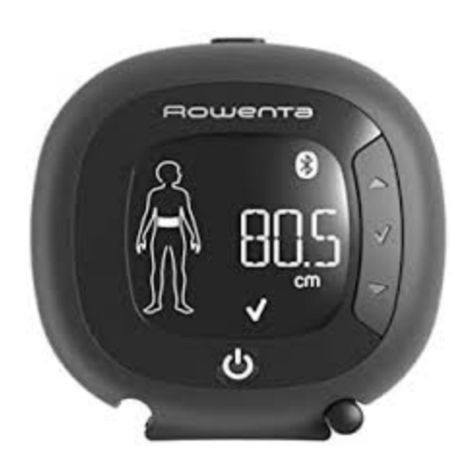
Rowenta
Rowenta BODY PARTNER instruction manual
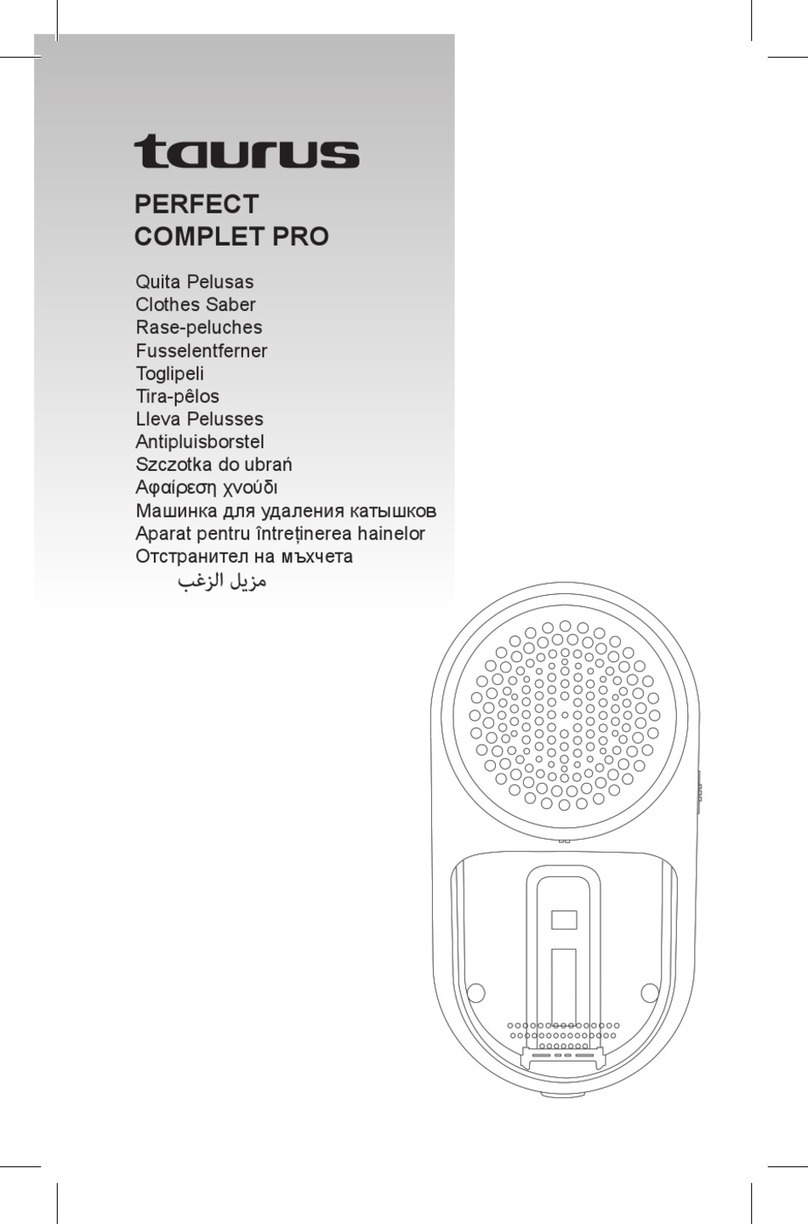
Taurus
Taurus PERFECT COMPLET PRO Instructions for use
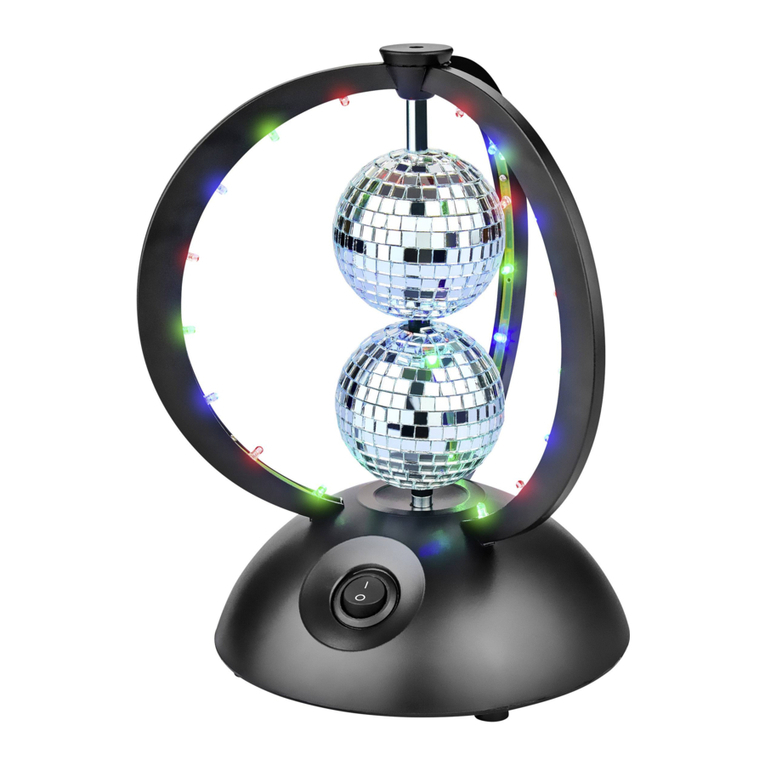
Renkforce
Renkforce 1650742 operating instructions

AEG
AEG LADY BEAUTY SET LBS 5676 instruction manual

Gaiam
Gaiam BALANCE WEDGE Setup, Workout Tips and Care & Safety Guide

Sunshower
Sunshower DELUXE WHITE manual
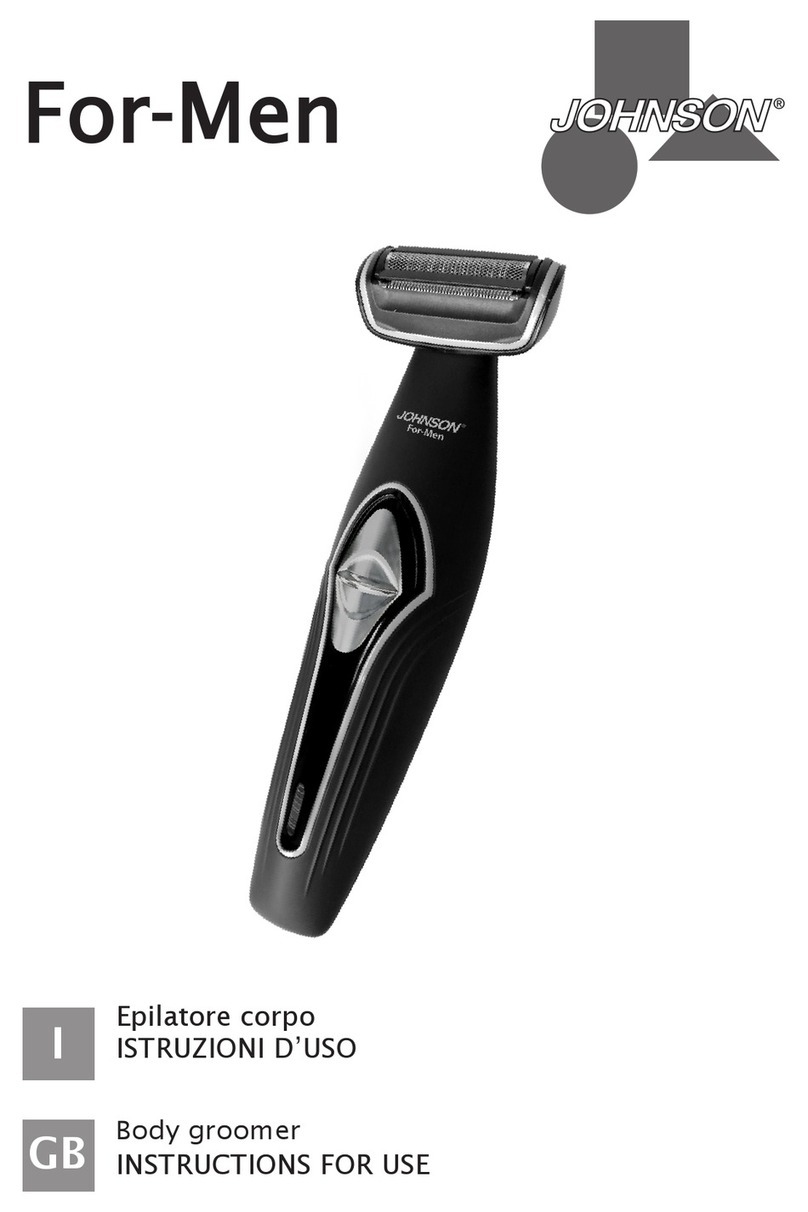
Johnson
Johnson FOR MEN Instructions for use
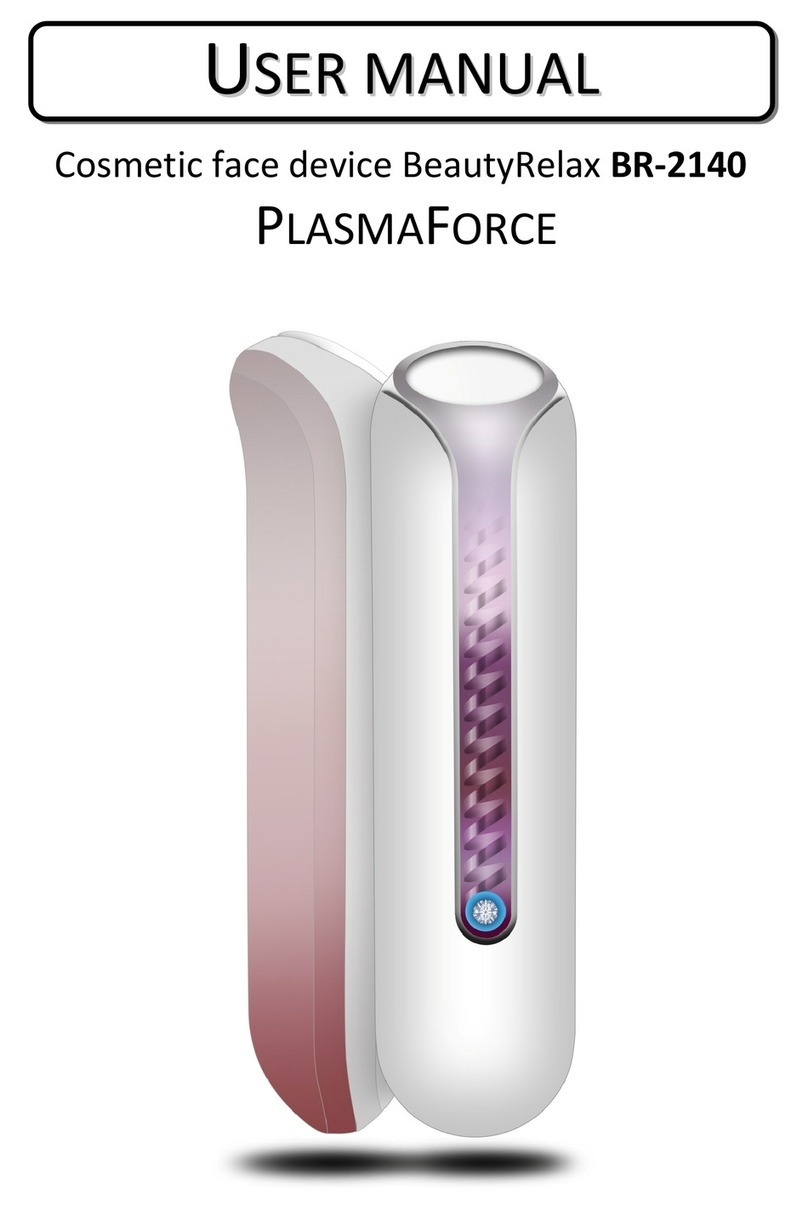
BeautyRelax
BeautyRelax PLASMAFORCE BR-2140 user manual

Emco
Emco 4496 000 01 Mounting instruction

BERTSCHAT
BERTSCHAT HEATED MITTENS SINGLE HEATING user manual
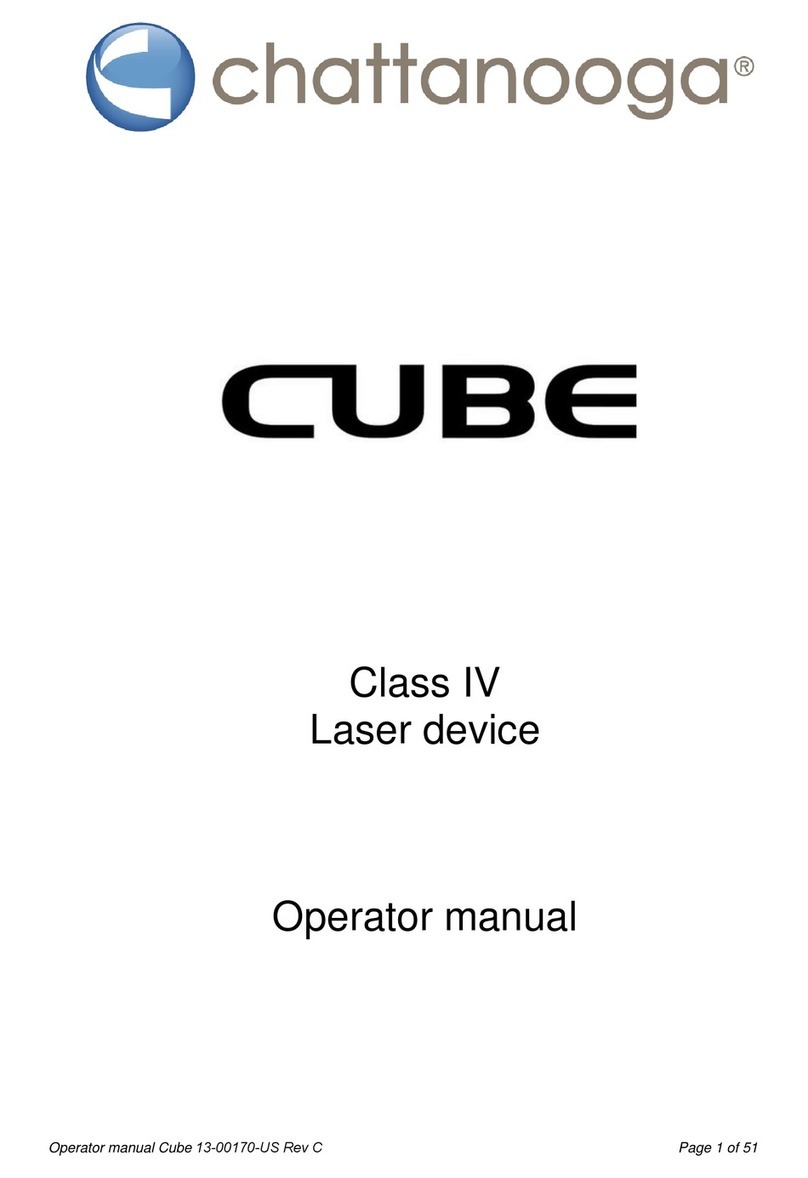
Chattanooga
Chattanooga Cube 3 Operator's manual
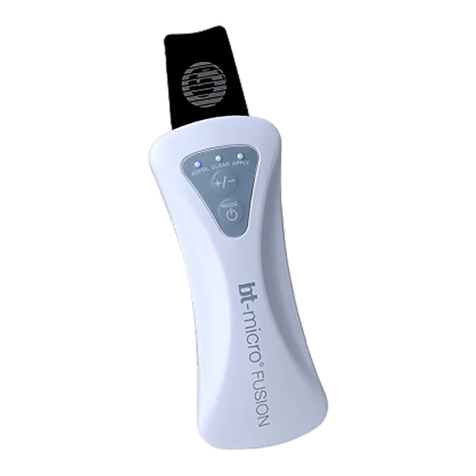
Bio-Therapeutic
Bio-Therapeutic BT-MICRO FUSION quick start guide

